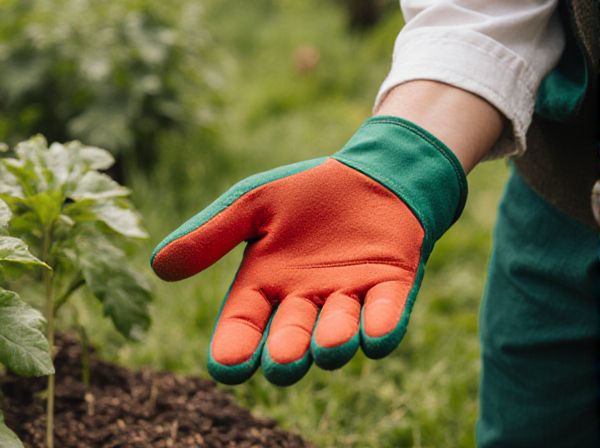
Topcut Harvest vs Bottomcut Harvest Illustration
Topcut harvest involves cutting only the upper portion of the crop, promoting faster regrowth and maintaining soil structure, which is ideal for high-quality yields and frequent harvesting cycles. Bottomcut harvest removes the crop closer to the base, maximizing initial biomass but often leading to slower regeneration and increased soil disturbance. Choosing between topcut and bottomcut harvest depends on crop type, field conditions, and long-term sustainability goals.
Table of Comparison
| Feature | Topcut Harvest | Bottomcut Harvest |
|---|---|---|
| Definition | Harvesting crops from the top part of the plant | Harvesting crops from the base or bottom of the plant |
| Typical Use | Leaves, fruits, and upper shoots | Roots, tubers, and entire plant removal |
| Plant Impact | Partial plant remains for regrowth | Complete plant removal, no regrowth |
| Yield Frequency | Multiple harvests per season possible | Single harvest per plant lifecycle |
| Harvesting Method | Selective clipping or pruning | Uprooting or cutting at soil level |
| Examples | Tea leaves, lettuce, cotton | Potatoes, carrots, sugar beets |
Introduction to Topcut and Bottomcut Harvest Methods
Topcut harvest involves cutting the upper, more mature parts of plants, maximizing quality and potency often preferred in premium crops like cannabis. Bottomcut harvest targets the lower sections, yielding higher volume but potentially lower quality due to less mature plant material. Understanding these methods allows growers to balance between maximizing quality and total biomass depending on cultivation goals.
Understanding the Topcut Harvest Technique
Topcut harvest technique involves selectively cutting only the upper portion of crops, maximizing quality by preserving lower growth for regrowth and extended yield. This method improves crop uniformity and reduces damage to the plant base compared to bottomcut harvesting, which removes the entire plant at ground level. Farmers adopting topcut harvest benefit from higher-quality produce and sustainable crop cycles that enhance long-term productivity.
Exploring the Bottomcut Harvest Approach
The Bottomcut Harvest approach targets the lower canopy of crops, optimizing light exposure and air circulation to enhance overall plant health and yield quality. This method reduces shading and promotes uniform development by selectively harvesting the bottom foliage, which can increase nutrient efficiency and disease resistance. Studies show that Bottomcut Harvest techniques can lead to improved crop sustainability and higher marketable produce compared to traditional Topcut Harvest methods.
Key Differences Between Topcut and Bottomcut Harvest
Topcut harvest targets the upper portions of crops, maximizing quality by selecting the most mature and nutrient-rich parts, whereas bottomcut harvest focuses on the lower sections, often capturing more biomass but with lower overall quality. Key differences include the impact on regrowth potential, as topcut harvesting preserves basal growth points promoting faster regrowth compared to bottomcut methods that may damage these areas. Additionally, topcut harvest tends to result in higher market value produce due to better appearance and nutrient content, while bottomcut harvest is favored for bulk feed production with lower nutritional density.
Benefits of Topcut Harvesting in Gardening
Topcut harvesting preserves the plant's root system and promotes regrowth, enabling multiple harvest cycles within a single growing season. This method enhances plant health by reducing stress and maintaining nutrient uptake, resulting in higher yields and better quality produce. Gardeners benefit from improved sustainability and efficiency, as topcut harvesting minimizes plant replacement costs and supports continuous garden productivity.
Advantages of Bottomcut Harvesting for Gardeners
Bottomcut harvesting preserves the plant's growth potential by cutting stems just above the soil, encouraging regrowth and allowing multiple harvest cycles in a growing season. This method reduces plant stress and maintains root health, leading to higher yields and prolonged garden productivity. Gardeners benefit from sustainable harvesting and increased crop resilience with bottomcut techniques.
Impact on Yield: Topcut vs Bottomcut Harvest
Topcut harvest typically results in lower overall yield because only the upper portions of the crop are collected, leaving significant biomass behind. Bottomcut harvest maximizes yield by capturing nearly the entire plant, including stalks and lower leaves, which increases total biomass collected. However, the choice between topcut and bottomcut harvest impacts post-harvest processing and regrowth potential.
Effects on Plant Health: Comparing Harvest Methods
Topcut harvest preserves the lower plant structure, promoting continued photosynthesis and reducing stress, which enhances plant health and future yield potential. Bottomcut harvest removes more biomass close to the base, often resulting in increased vulnerability to pests and slower regrowth due to reduced leaf area. Research shows topcut methods support quicker recovery and sustained plant vigor compared to bottomcut techniques that can compromise long-term crop productivity.
Ideal Plants for Topcut and Bottomcut Harvest
Topcut harvest is ideal for tall, leafy plants such as cannabis or tobacco, where the focus is on preserving the upper buds or leaves for higher potency and quality. Bottomcut harvest suits bushy, shorter plants like tomatoes or peppers, allowing for efficient removal of lower branches or fruits while promoting healthier growth. Selecting the appropriate harvest method based on plant structure maximizes yield and product quality.
Choosing the Right Harvest Method for Your Garden
Topcut harvest involves trimming the upper parts of plants to promote bushier growth and higher yields, making it ideal for herbs and leafy greens. Bottomcut harvest targets lower leaves or stems, suited for root vegetables or plants where the base is most valuable. Choosing the right harvest method depends on the crop type and desired plant development to maximize both quality and quantity in your garden.
Topcut Harvest vs Bottomcut Harvest Infographic

 gardendif.com
gardendif.com